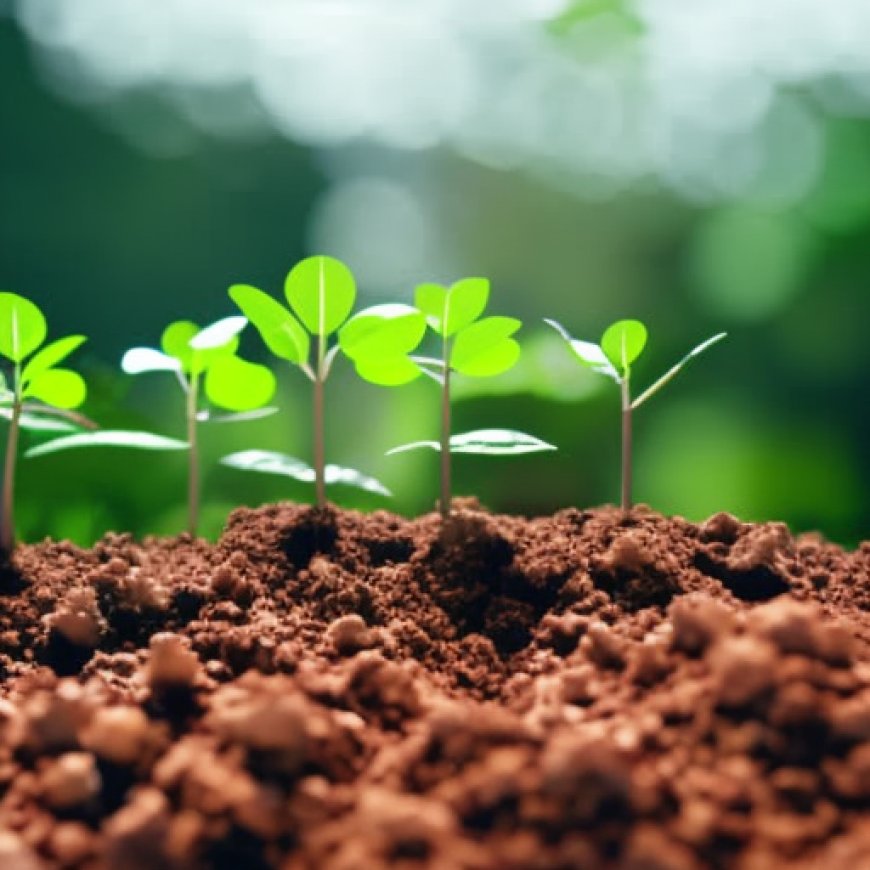Planting Trees May Be an Awful Way to Fight Climate Change
Planting Trees May Be an Awful Way to Fight Climate Change The Daily Beast


Planting Trees for Carbon Offset: A Potential Threat to Biodiversity and Ecosystems

Introduction
Planting trees is widely recognized as an effective measure to improve air quality, promote biodiversity, and mitigate carbon dioxide emissions, thus combating the impacts of anthropogenic climate change. However, the approach taken in carbon-offset planting, a popular method used by large companies to offset their carbon footprint, may inadvertently lead to a loss of biodiversity and the destruction of healthy tropical ecosystems. This article explores the potential negative consequences of carbon-offset tree plantations and emphasizes the need for a holistic perspective in conservation efforts.
The Impact of Carbon-Offset Planting on Biodiversity
The problem lies in the selection of tree species for planting. While tropical ecosystems are naturally diverse, carbon-offset planting often involves a limited number of economically valuable species such as cedar, mahogany, silk oak, teak, and black wattle. This monoculture approach, driven by economic interests, results in a reduction in biodiversity and undermines the very ecosystems it aims to protect.
The Role of Planting Location
The impact of carbon-offset planting is also influenced by the choice of planting locations. Reforestation involves planting trees in areas previously deforested due to natural or human causes, while afforestation focuses on areas that have never been forested, such as grasslands or savannas. Afforestation can disrupt carbon sinks and create monocultures, leading to increased vulnerability to droughts and wildfires. For instance, a study found that a 40 percent increase in forest cover in the Brazilian Cerrado savannah resulted in a 30 percent loss of plant and insect biodiversity.
The Role of Corporations and Carbon Credits
Private corporations, including fossil-fuel companies, AI tech startups, and automakers, rely on carbon-offset planting through carbon credits to achieve “net zero carbon emissions.” However, these planting schemes often capture only a fraction of the emissions produced by these companies. To truly address climate change, companies should prioritize preserving existing ecosystems and directly reducing their carbon footprint.
The Need for a Holistic Approach
Lead author Jesus Aguirre-Guitierrez emphasizes the importance of adopting a holistic perspective that prioritizes the preservation and protection of natural ecosystems. By maintaining healthy ecosystems and restoring altered ones, coupled with substantial reductions in greenhouse gas emissions, we can make significant contributions to combating climate change.
Conclusion
While planting trees is crucial for environmental conservation, the carbon-offset planting approach used by many companies poses risks to biodiversity and ecosystems. To achieve the Sustainable Development Goals (SDGs) and effectively combat climate change, it is essential to shift towards a more holistic approach that prioritizes the preservation of natural ecosystems and reduction of greenhouse gas emissions.
SDGs, Targets, and Indicators
| SDGs | Targets | Indicators |
|---|---|---|
| SDG 13: Climate Action | Target 13.2: Integrate climate change measures into national policies, strategies, and planning | Indicator not mentioned in the article |
| SDG 15: Life on Land | Target 15.1: Ensure the conservation, restoration, and sustainable use of terrestrial and inland freshwater ecosystems and their services | Indicator not mentioned in the article |
| SDG 15: Life on Land | Target 15.5: Take urgent and significant action to reduce the degradation of natural habitats, halt the loss of biodiversity, and protect and prevent the extinction of threatened species | Indicator not mentioned in the article |
| SDG 15: Life on Land | Target 15.9: By 2020, integrate ecosystem and biodiversity values into national and local planning, development processes, poverty reduction strategies, and accounts | Indicator not mentioned in the article |
| SDG 15: Life on Land | Target 15.b: Mobilize significant resources from all sources and at all levels to finance sustainable forest management and provide adequate incentives to developing countries to advance such management, including for conservation and reforestation | Indicator not mentioned in the article |
1. Which SDGs are addressed or connected to the issues highlighted in the article?
- SDG 13: Climate Action
- SDG 15: Life on Land
The article discusses the negative impact of carbon-offset tree plantations on biodiversity and ecosystems. This connects to SDG 13, which focuses on climate action, as planting trees is seen as a way to combat climate change. The article also highlights the importance of conserving and restoring natural ecosystems, which aligns with SDG 15, which aims to protect and restore terrestrial ecosystems and halt biodiversity loss.
2. What specific targets under those SDGs can be identified based on the article’s content?
- Target 13.2: Integrate climate change measures into national policies, strategies, and planning
- Target 15.1: Ensure the conservation, restoration, and sustainable use of terrestrial and inland freshwater ecosystems and their services
- Target 15.5: Take urgent and significant action to reduce the degradation of natural habitats, halt the loss of biodiversity, and protect and prevent the extinction of threatened species
- Target 15.9: By 2020, integrate ecosystem and biodiversity values into national and local planning, development processes, poverty reduction strategies, and accounts
- Target 15.b: Mobilize significant resources from all sources and at all levels to finance sustainable forest management and provide adequate incentives to developing countries to advance such management, including for conservation and reforestation
Based on the article’s content, the targets mentioned above are relevant. These targets emphasize the integration of climate change measures, conservation and restoration of ecosystems, reduction of habitat degradation and biodiversity loss, and the mobilization of resources for sustainable forest management.
3. Are there any indicators mentioned or implied in the article that can be used to measure progress towards the identified targets?
No indicators are mentioned or implied in the article that can be used to measure progress towards the identified targets.
The article does not provide specific indicators to measure progress towards the identified targets. It focuses more on highlighting the negative impact of carbon-offset tree plantations on biodiversity and ecosystems rather than providing measurable indicators.
4. SDGs, Targets, and Indicators
| SDGs | Targets | Indicators |
|---|---|---|
| SDG 13: Climate Action | Target 13.2: Integrate climate change measures into national policies, strategies, and planning | Indicator not mentioned in the article |
| SDG 15: Life on Land | Target 15.1: Ensure the conservation, restoration, and sustainable use of terrestrial and inland freshwater ecosystems and their services | Indicator not mentioned in the article |
| SDG 15: Life on Land | Target 15.5: Take urgent and significant action to reduce the degradation of natural habitats, halt the loss of biodiversity, and protect and prevent the extinction of threatened species | Indicator not mentioned in the article |
| SDG 15: Life on Land | Target 15.9: By 2020, integrate ecosystem and biodiversity values into national and local planning, development processes, poverty reduction strategies, and accounts | Indicator not mentioned in the article |
| SDG 15: Life on Land | Target 15.b: Mobilize significant resources from all sources and at all levels to finance sustainable forest management and provide adequate incentives to developing countries to advance such management, including for conservation and reforestation | Indicator not mentioned in the article |
Behold! This splendid article springs forth from the wellspring of knowledge, shaped by a wondrous proprietary AI technology that delved into a vast ocean of data, illuminating the path towards the Sustainable Development Goals. Remember that all rights are reserved by SDG Investors LLC, empowering us to champion progress together.
Source: thedailybeast.com

Join us, as fellow seekers of change, on a transformative journey at https://sdgtalks.ai/welcome, where you can become a member and actively contribute to shaping a brighter future.







